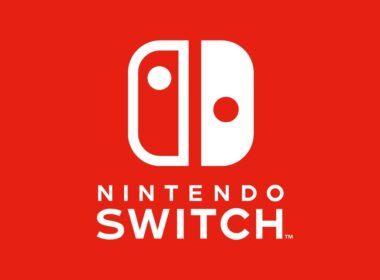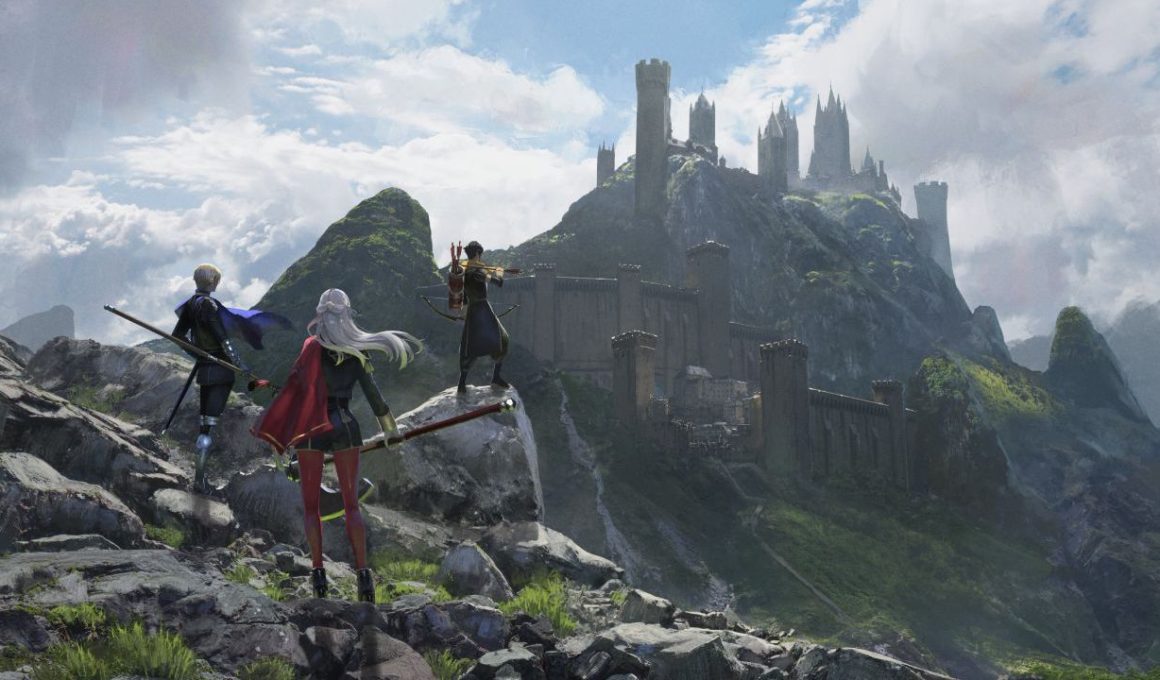Welcome to the land of Fódlan, the latest continent to be stitched into Fire Emblem’s richly woven tapestry. Believed to be protected by a revered goddess, it has existed since time immemorial and three ruling powers now control the land: the Adrestian Empire, the Holy Kingdom of Faerghus, and the Leicester Alliance.
Situated at the heart of the continent is the Garreg Mach Monastery, which is not only home to the Church of Seiros which works to maintain peace but also the Officers Academy – a prestigious school that trains those that will go on to impact Fódlan’s future.
This is Fire Emblem: Three Houses, a game in which you play as Byleth, a mercenary-for-hire, who, after rescuing the Black Eagle, Blue Lion, and Golden Deer house leaders Edelgard, Dimitri, and Claude from a bandit ambush, are invited back to the monastery so that you can be thanked for your heroic actions.
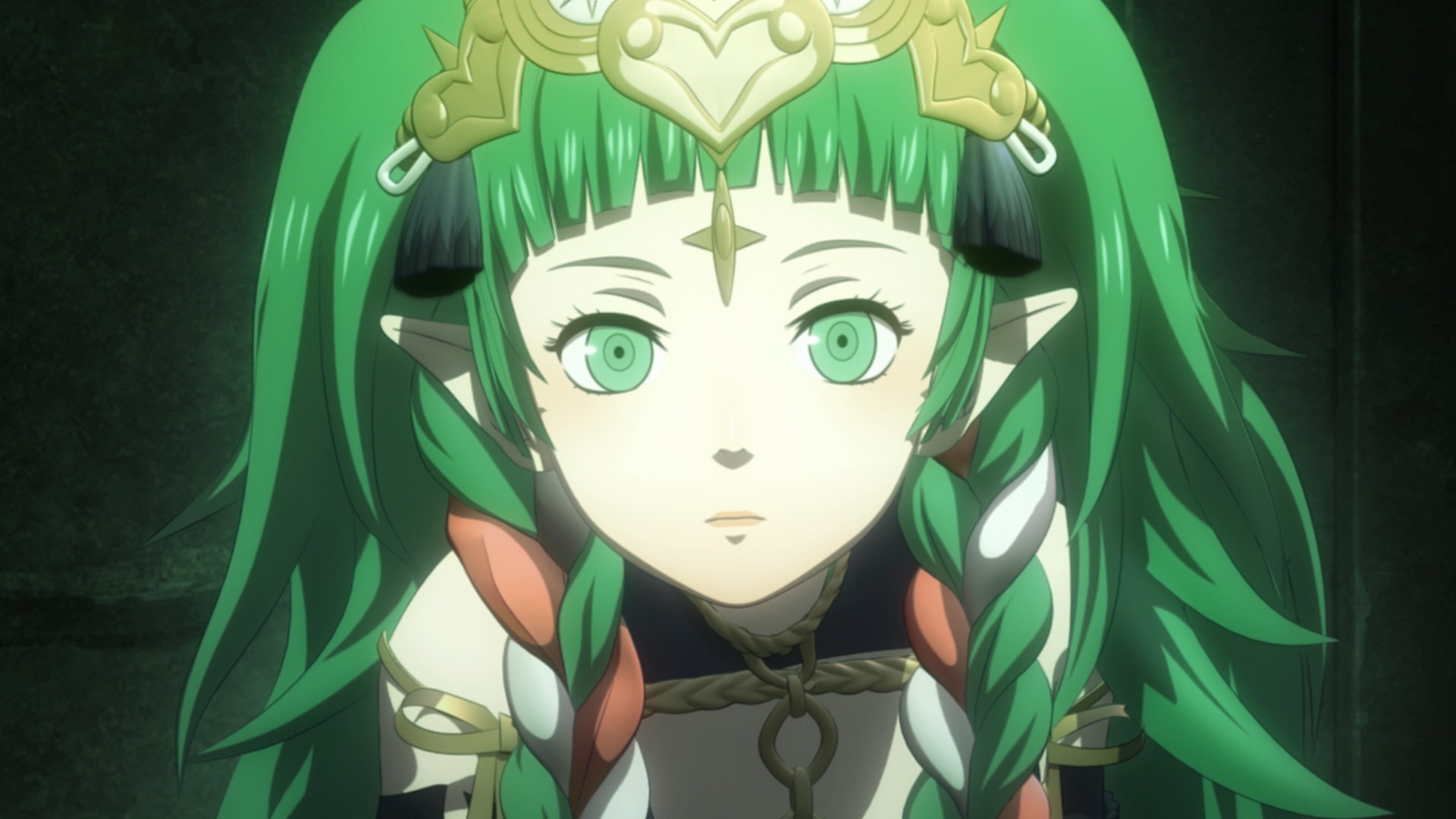
It is here that you meet Rhea – the Archbishop and supreme leader of the Church of Seiros – for the first time, which is an encounter that results in an unexpected invitation to become a professor at Garreg Mach Monastery – responsible for lending your expertise and guidance to the students from one of the three noble houses. Throw in a mysterious being called Sothis who has started to appear in Byleth’s dreams, and the groundwork is in place for the twist-packed narrative that is about to unravel.
With three storylines to tread – not to mention divergent dialogue choices within them – your immediate choice is whether to instruct the Black Eagles, Blue Lions, or Golden Deer. That leads to an inevitable comparison point to Fire Emblem Fates (but now in one generous package), as siding with each of the noble houses offers a new perspective on the events that will transpire. This encourages repeat playthroughs, even if that will be daunting to most given the exhaustive 70-hour runtime your first will take. Although, New Game Plus will help to expedite your successive experiences.
You can expect your early hours with Fire Emblem: Three Houses to ease you into understanding what is expected of you in your new role at the Officers Academy. Within the building’s confines, you must mentor the students in your chosen house and guide how they concentrate their studies. This, ultimately, will hone their skills to become proficient in particular weapons or mastering the study of magic – eventually taking Certification Exams to unlock more advanced classes.
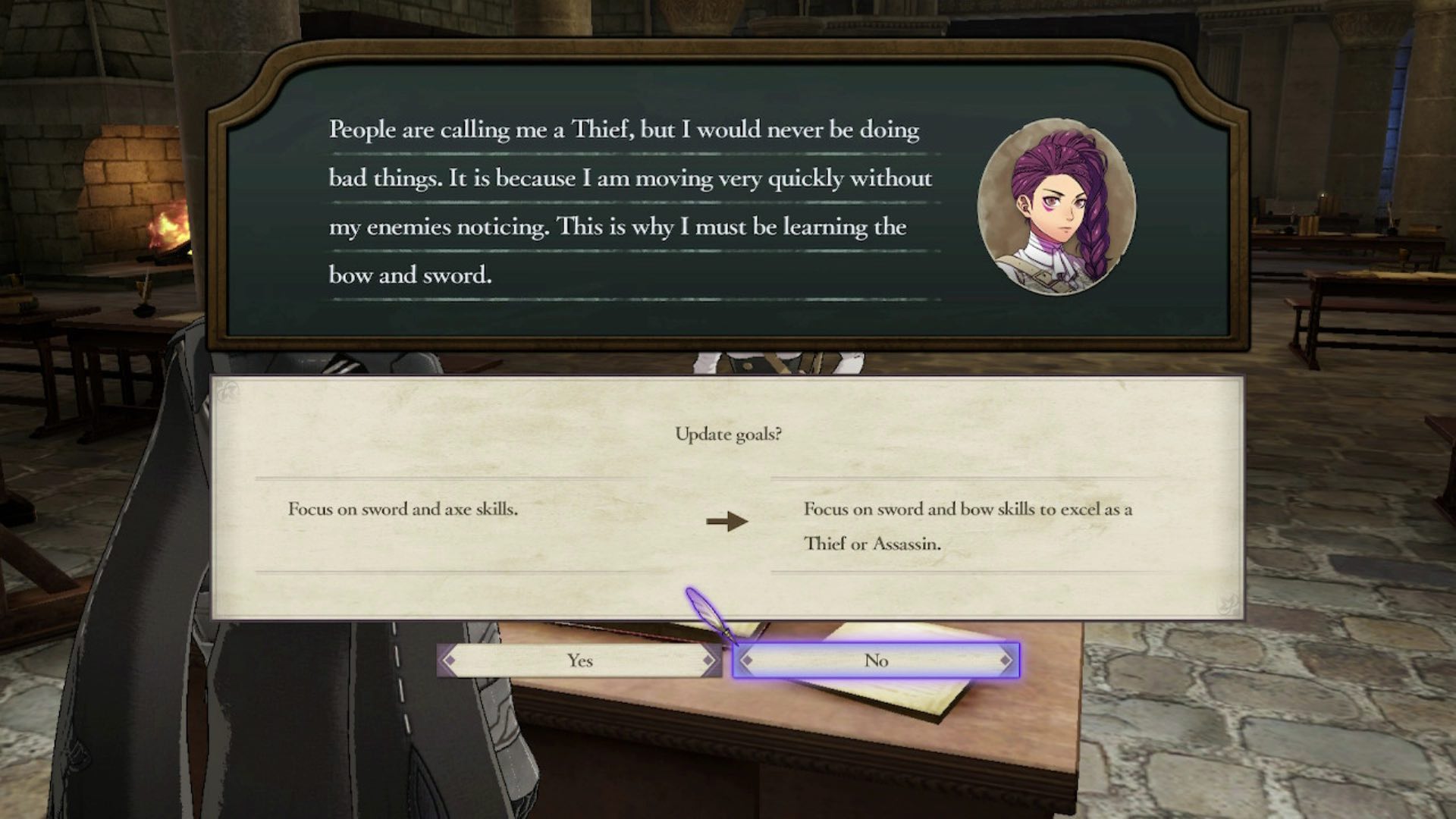
At the start of each week, you will have the chance to continue and tweak their instruction as necessary. That could see you ask one student to focus on their proficiency with an Axe and Heavy Armor so that they can eventually become a Fortress Knight, or Sword and Bow in order to progress into an Assassin, for example. If your students believe that they could refocus their studies to achieve better results they will approach you for approval to do so, and, if this whole element is starting to sound like a nightmare to you, you can simply ask the game to automate the process.
The clear benefit to being able to directly tutor your students is that, rather than recruiting characters with largely pre-fixed classes, you are given more than enough time week-on-week to repurpose them however your wish – even if their base skills mean that there are some characters that will continue to suit particular roles on the battlefield.
However, there’s more to your time at Garreg Mach Monastery than helping the students with their academic lives. With the chance to wander its labyrinthine corridors and grandiose halls, each weekend you will have the chance four options: Explore, Seminar, Battle, or Rest. If you choose to connect your game online, it will show what percentage of players chose which activity on what day. Which, while you’re free to ignore, could offer a helpful comparison.
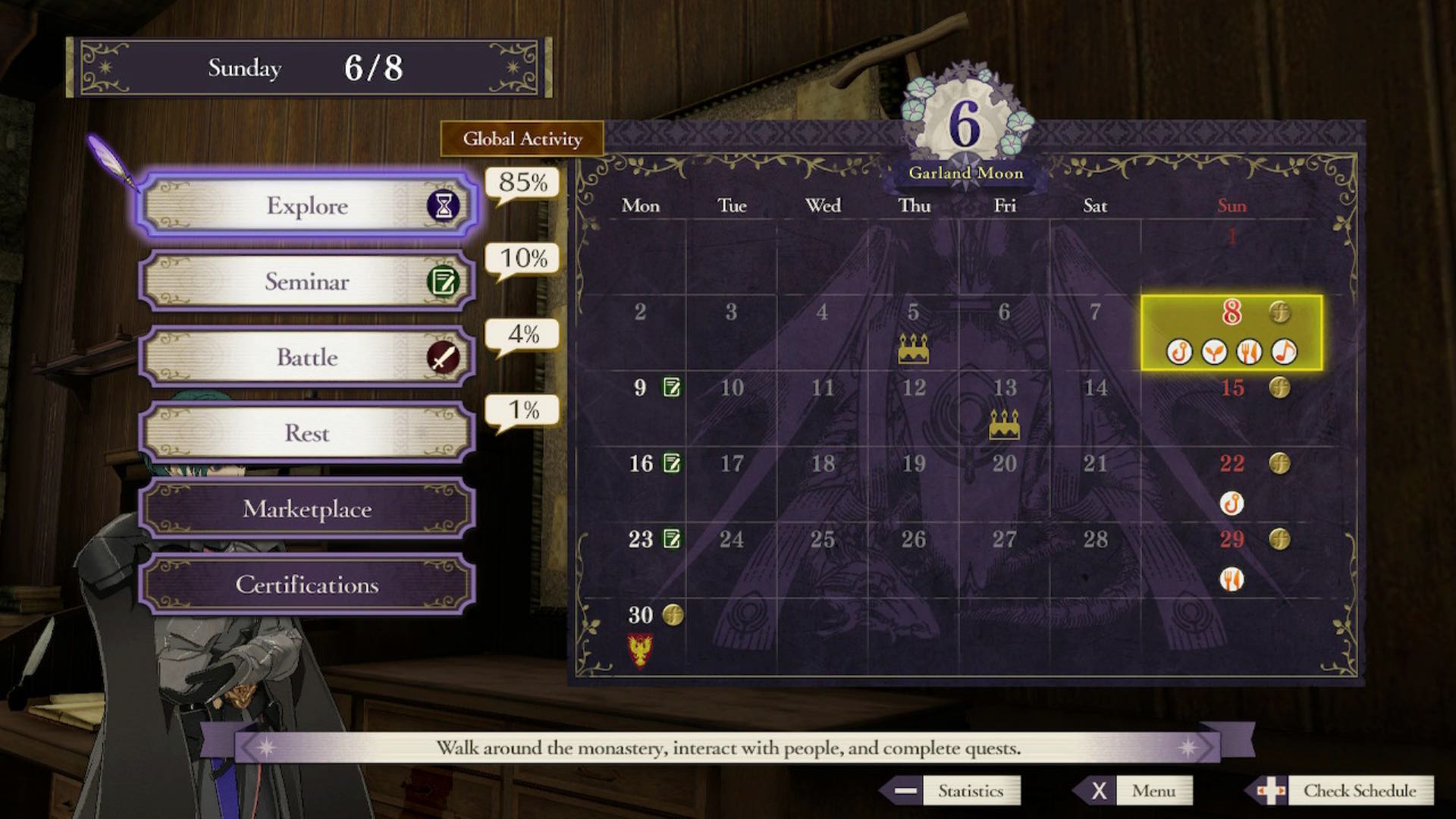
Your schedule will outline the month ahead, and, after glancing at what’s happening, it’s up to you to decide how to spend your spare time. Choosing to Explore will let you walk around the monastery to interact with the professors, get to know the students more, and complete side quests – which more often than not turn out to be fetch missions.
You will also stumble on Lost Items that must be returned to their correct owner, answer questions anonymously slotted into the Advice Box at the Cathedral, or you can enter a battle-hardened student into monthly Fighting Tournaments with the hope of earning rewards. And then you can head to the Fishing Pond to see what ends up nibbling on your bait, eat a meal with your students in the Dining Hall, or cultivate flowers and crops in the Greenhouse.
Anything that you do will use up your limited Activity Points for that day, but, as your Professor Level increases from your interactions, so too will how much you can pack in. It’s a worthwhile investment too, as, while you will be rewarded with Support Points to build your relationships with other characters, certain activities can boost a student’s Motivation – making a positive impact on how much they can then learn in classes.
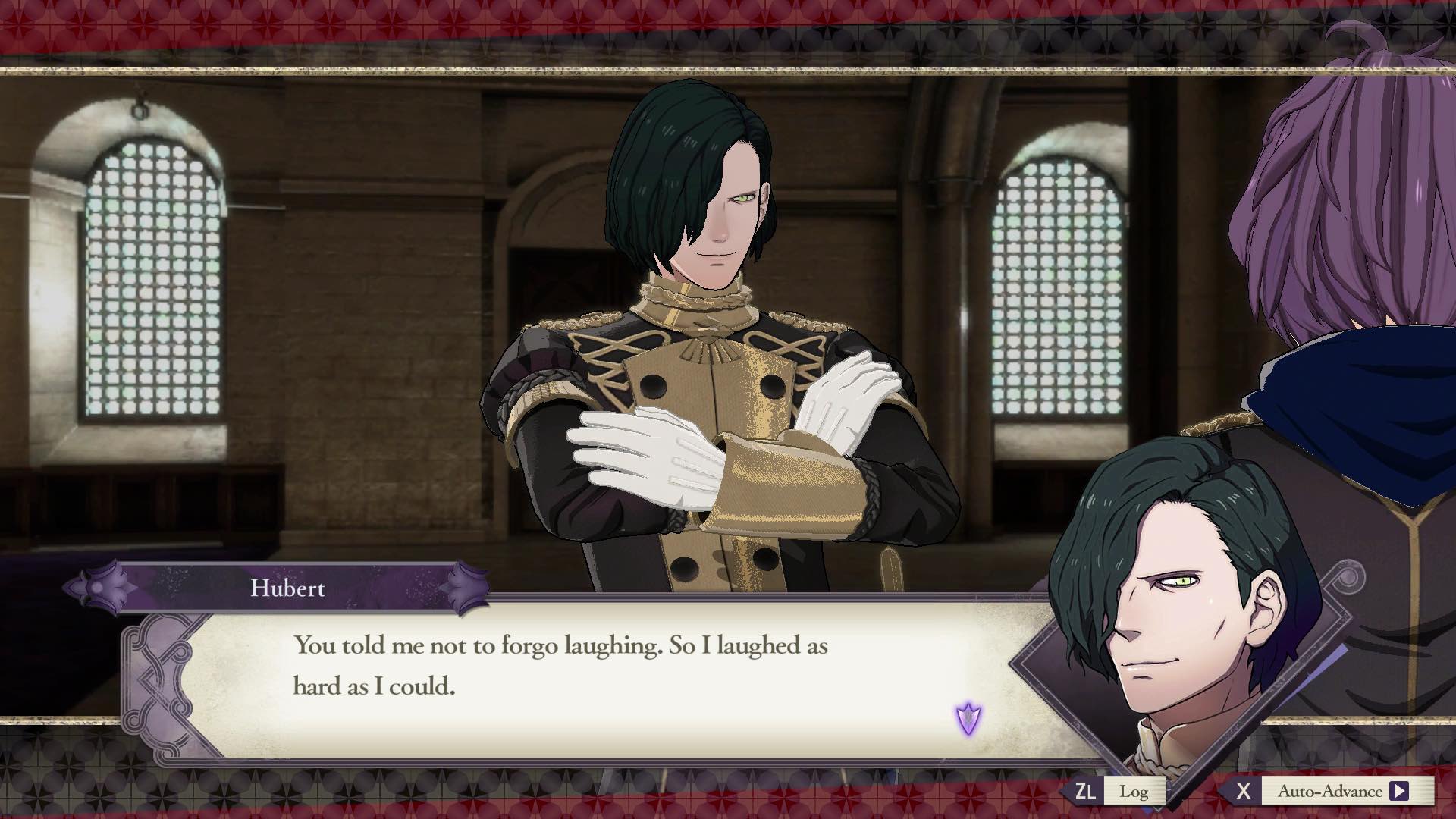
This can be seen as an optional layer to Fire Emblem: Three Houses that time-pressed players could end up ignoring, but, for those wanting to savor the experience, there’s ample room to build your Support Levels – rewarding you with backstory-revealing or laughter-inducing Support Conversations as well as character-sharing bonuses in battle. And, more than that, the hours that I have spent with the students in the monastery meant that I felt a far stronger connection to them compared with previous games.
Your other options are more straightforward to explain. Seminar will let you ask a professor to impart their knowledge to a handful of students, Battle will let you engage in Mission, Auxiliary, Paralogue, or Quest encounters as a chance for your students to earn more experience, and Rest will allow them time to recover and boost their motivation in the process.
Once you’re confronted with enemies to rout on the battlefield, Intelligent Systems continue to deliver an exceptional and multi-faceted turn-based tactical experience. There’s much that remains the same, in that these are grid-based skirmishes in which you will command your students – using advantageous terrain to boost your unit’s evasion and defense. The Combat Forecast returns, helping you to work out which attacks to make and when before you commit to them.
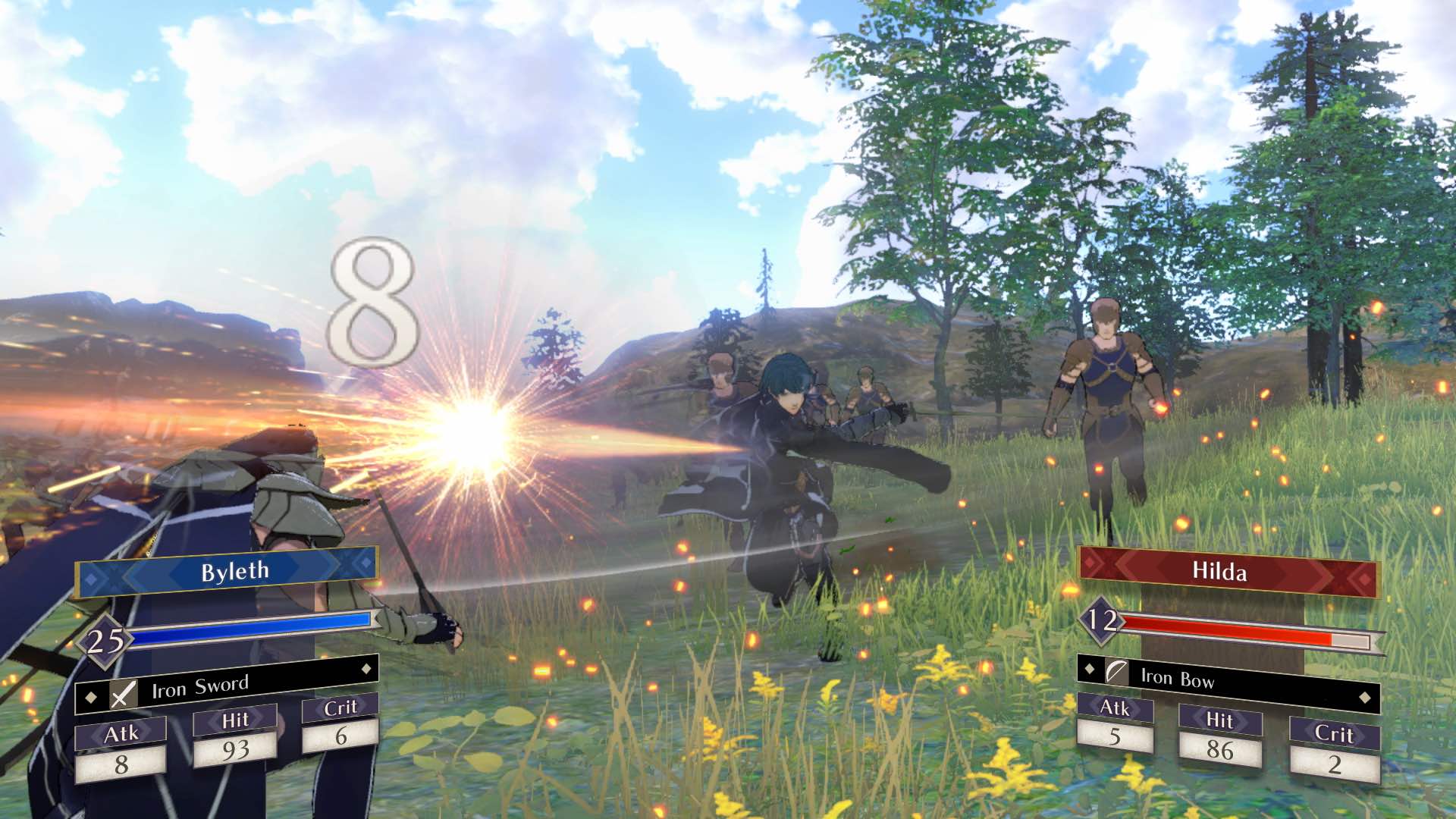
Weapon durability soon comes into consideration as those that your students carry can break with repeated use. These can be repaired between battles, but this is something that you will need to keep in mind as you use Combat Arts to bring your enemies to their knees – more powerful techniques that your students will learn as their weapon skill levels go up.
It’s the refinements and new gameplay mechanics that impress. Moving a character into an enemy’s range now draws an aggro line to show that they are being targeted. Move multiple characters into that range at the same time, and the line soon becomes a welcomed red flag to indicate who is under threat and to react accordingly.
You can now hire Battalions that your students can lead. This will see them command soldiers like archers, mages, or monks, who not only help to make them an imposing presence on the battlefield but, more importantly, increase the stats of the character that they are assigned to. That could boost their attack or hit rate, as an example, and they earn experience fighting alongside them – boosting stats further as they level up. Your Battalions can take indirect damage to see them withdraw from a battle, but, between them, you can pay to replenish their ranks.
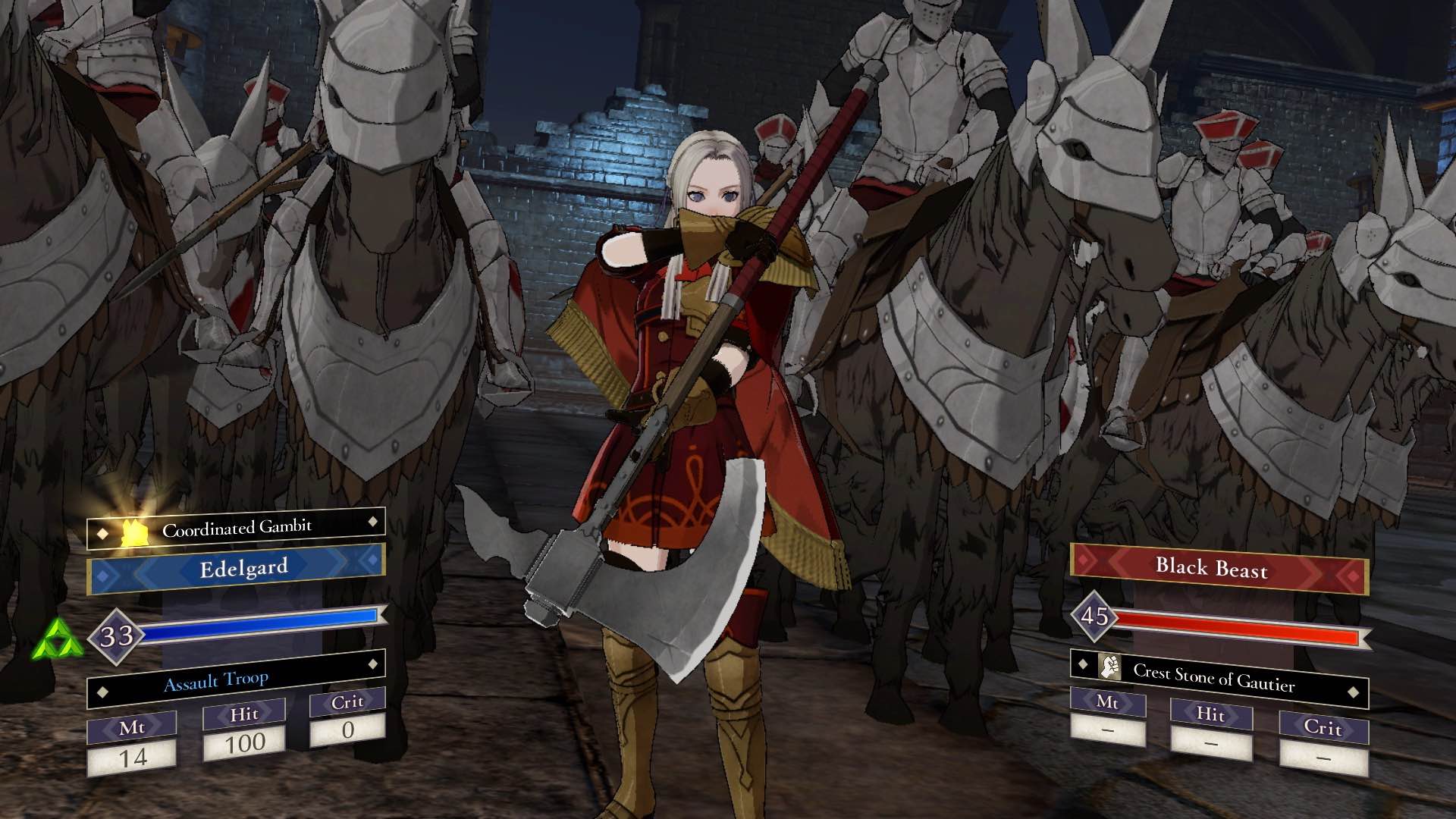
With your Battalions in play, Gambits are also introduced. These are special troop-based attacks that, if successful, will ‘rattle’ an enemy. That means that they cannot move, use Gambits, or benefit from any Battalions that they may have, and suffer a 10 percent penalty to all stats. This leads to the Gambit Boost that will see nearby allies team up, strengthening the might and hit rate of the Gambit – based on the units participating and their support levels.
It isn’t something that you will ever feel the need to use on standard grunts, but, soon, you will be met with fear-inducing monsters – such as Black Beasts – that you must topple. What makes their encounters challenging is that not only do they have devastating area of effect attacks but multiple health bars that must be depleted. You will feel nervous confronting them, dealing damage to first break their defensive barrier to cripple them with confusion before going all-out to wipe them from the battlefield.
By far, the most helpful addition is Divine Pulse. Even the most experienced strategists will find that their carefully devised plans don’t always pan out as expected, resulting in the loss of a character. This is obviously more troublesome when contending with permadeath in Classic mode, but, after pressing the ZL Button, you can use this miraculous power that Sothis grants you to rewind time. You can rewind to any move or turn that you have made to reconsider your strategy, and, while it has a limited number of uses, you can choose to unlock more as you progress. Used effectively it saves having to repeat battles in entirety though, which is invaluable.
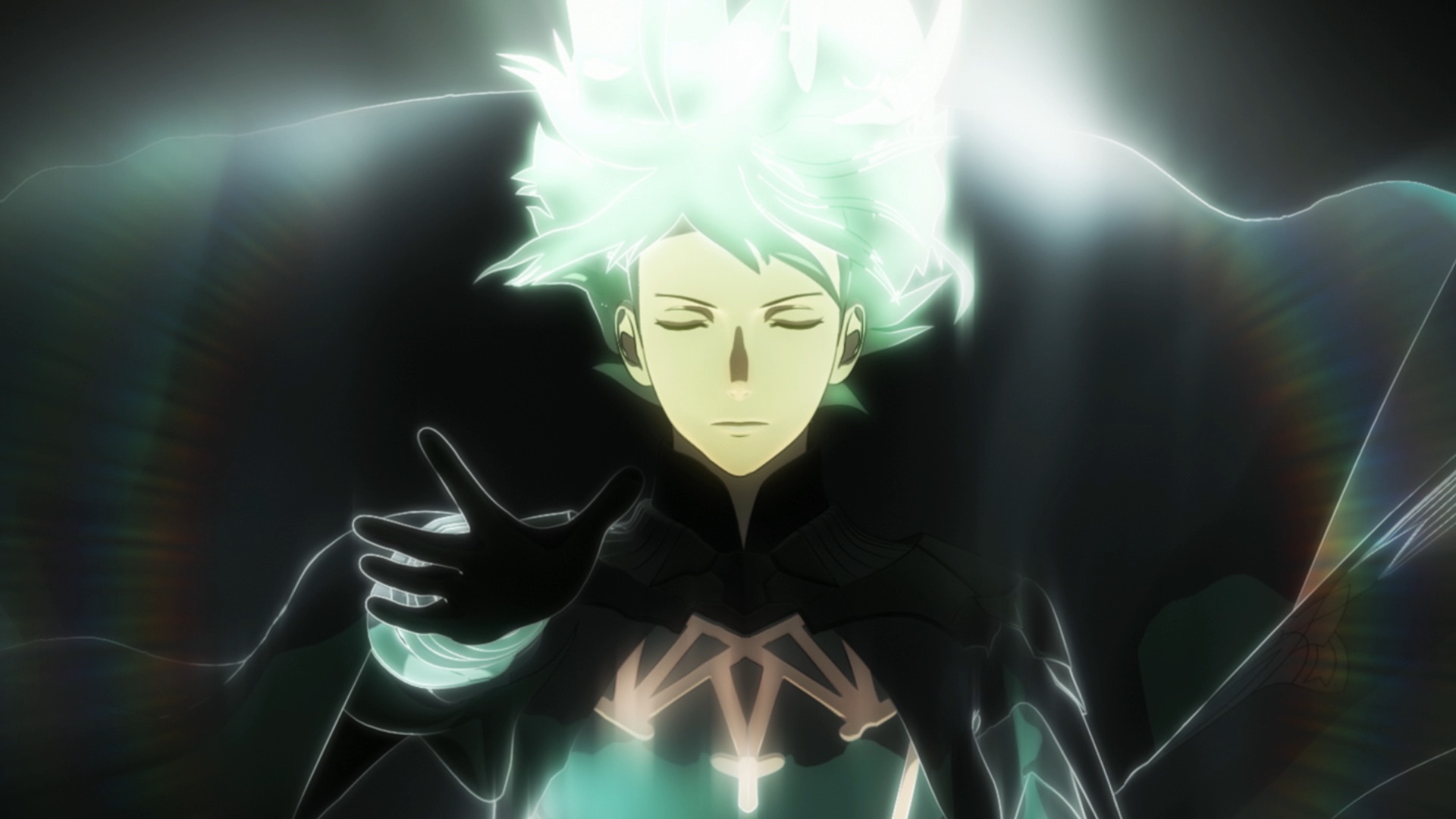
It sounds like there’s a lot to get to grips with in Fire Emblem: Three Houses, but the developer has made sure that the gameplay mechanics are gradually introduced over time – to the point that you should never feel overwhelmed. That results in a rewarding tactical experience that’s unlike any other on Nintendo Switch, and one that leaves you with the freedom to approach each battle however you wish.
It helps that Fire Emblem: Three Houses looks incredible. Now on a high-definition console for the first time, the move has allowed for much more expressive character models. The battle animations have become more dynamic and impactful, and there’s even the chance to zoom the camera to ground level to make it appear like your characters and Battalions have been plucked from Fire Emblem Warriors.
Fire Emblem: Three Houses is unrivaled in its scope and execution on Nintendo Switch to resoundingly deliver strategic perfection, whether at home or on the move. With a memorable cast of characters each with their own motivations – complemented with remarkable voice acting – it is the meticulous worldbuilding that elevates it to become one of the best games available on the portable home console. More than that, it’s Fire Emblem at its very best.
Version Tested: Nintendo Switch
Review copy provided by Nintendo


